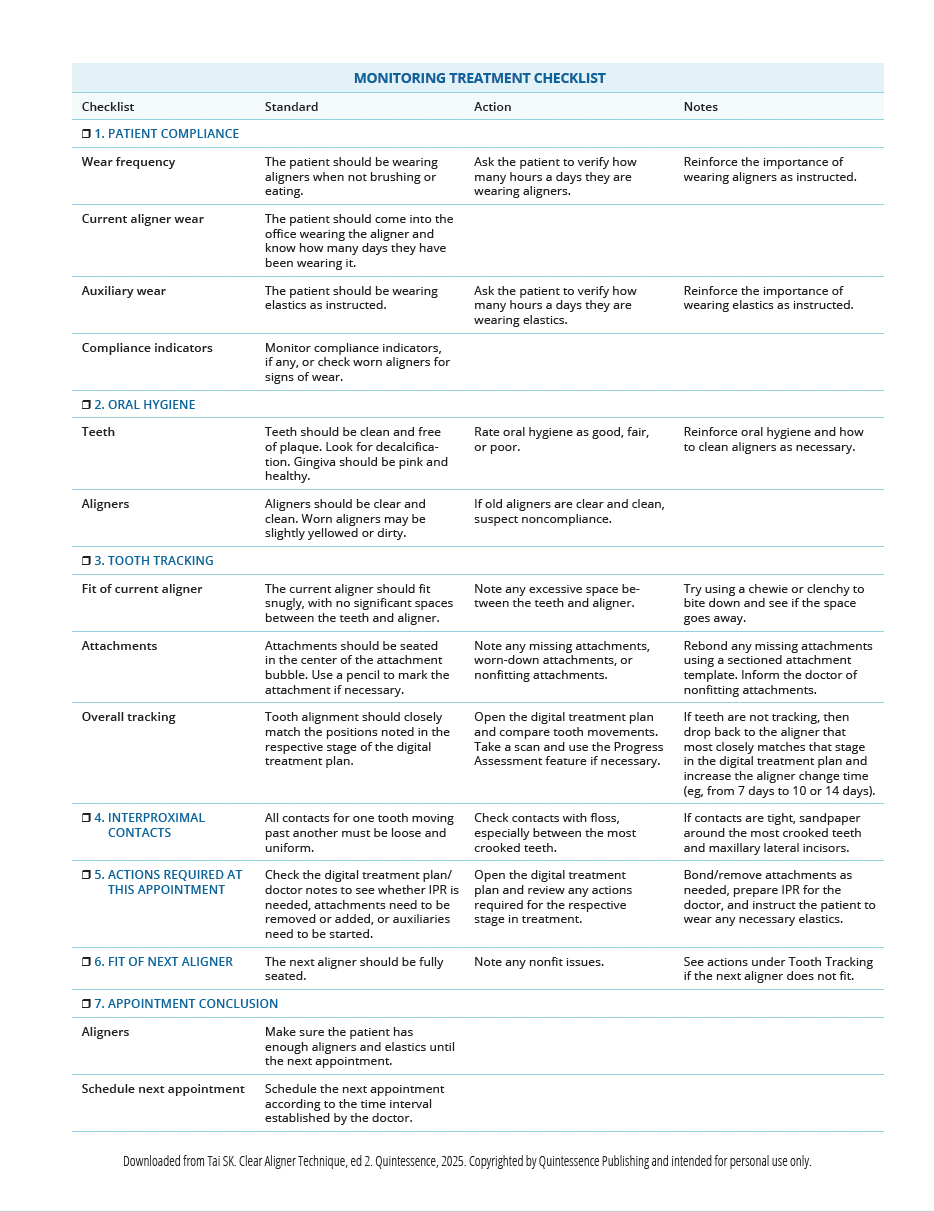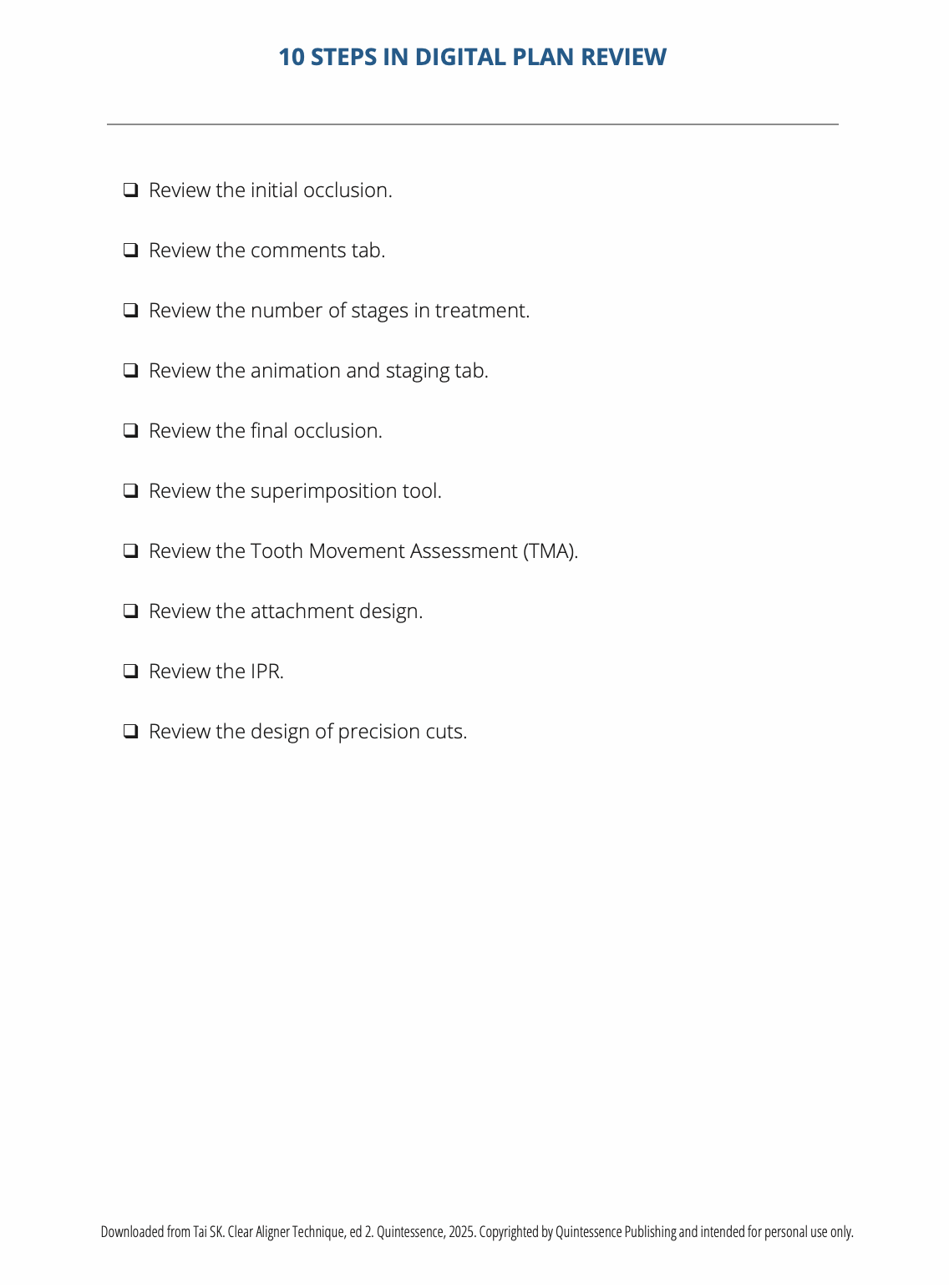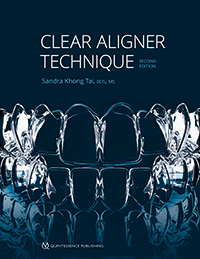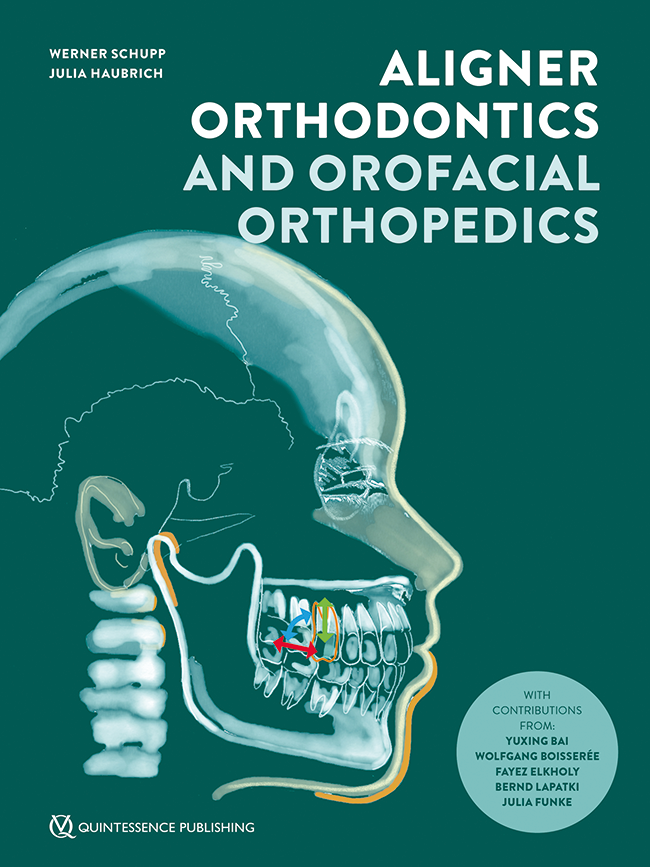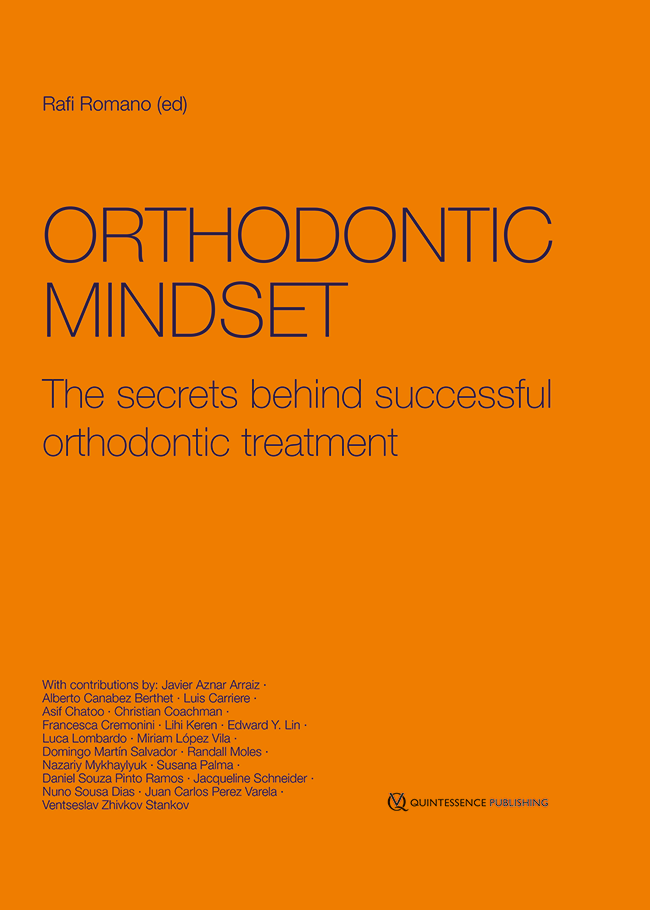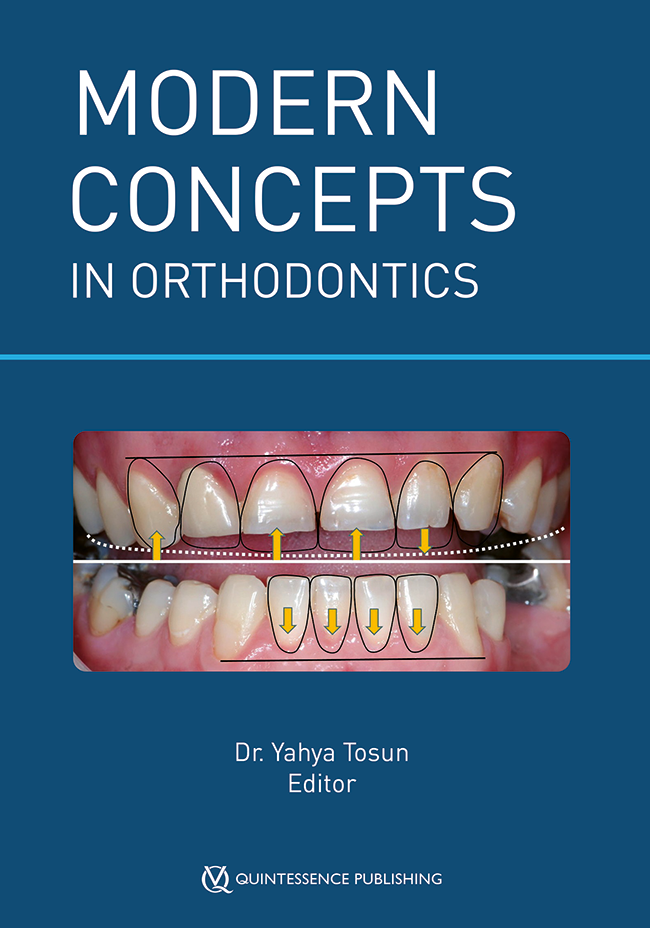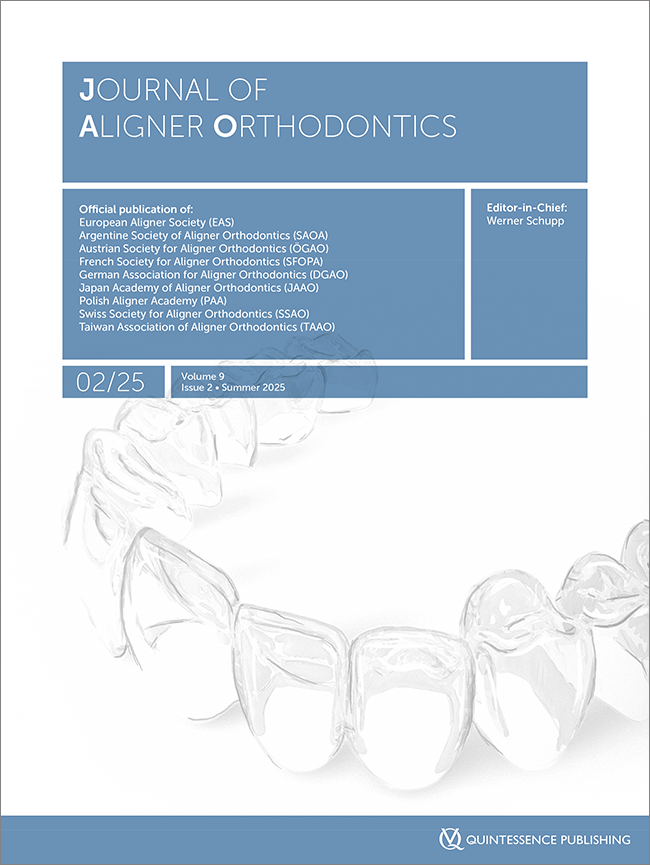Clear Aligner Technique
2nd Edition 2025
Book
Hardcover; 21.6 x 27.9 cm, 296 pages, 1300 illustrations
Language: English
Categories: Orthodontics, Esthetic Dentistry
Stock No.: B9516
ISBN 978-0-86715-951-6
QP USA
This second edition of the bestselling and authoritative text on clear aligners has been fully updated from start to finish, incorporating the step-by-step protocols of the first edition but including all new digital planning and staging images to reflect the latest software, new cases in every clinical chapter, and the latest advancements in technology and capabilities of clear aligners. In particular, the concept of combining anteroposterior protocols with vertical protocols for Class II and Class III treatment is introduced to assist clinicians in formulating treatment plans for different types of malocclusions. This edition also features brand-new chapters on Class II growth modification and early interceptive treatment with maxillary expansion, as clear aligners have developed extensively in these areas since the first edition was published. Boasting 32 clinical cases, this second edition includes a video for each case that explains the digital treatment plan design, including staging patterns, attachment design, and final occlusal plan. Finally, the bibliography has been updated to reflect the most recent research on clear aligner treatment. Patients want esthetic orthodontic treatment more than ever before, and clear aligners are more capable than ever before, so the future is clear. Find out how much you can do with clear aligners!
Contents
Chapter 01. A Brief History of the Orthodontic Appliance
Chapter 02. A Comparison Between Fixed Appliances and Clear Aligners
Chapter 03. Case Selection for Clear Aligner Treatment
Chapter 04. Digital Workflow and Monitoring Treatment
Chapter 05. Digital Treatment Planning and Software Design
Chapter 06. Staging Tooth Movements in the Digital Software Plan
Chapter 07. Troubleshooting, Finishing, and Retention
Chapter 08. Resolution of Spacing and Crowding
Chapter 09. Deep Bite Treatment
Chapter 10. Anterior Open Bite Treatment
Chapter 11. Class II Treatment
Chapter 12. Class II Growth Modification with Clear Aligners
Chapter 13. Class III Treatment
Chapter 14. Early Interceptive Treatment

Dr. Sandra Khong Tai BDS, MS
Canada, VancouverSandra Khong Tai, BDS, MS, FRCD(C), is a practicing specialist in orthodontics in Vancouver, Canada. She is a Clinical Assistant Professor in Orthodontics at the University of British Columbia in Vancouver as well as an Adjunct Clinical Assistant Professor at the University of the Pacific in San Francisco, California. She is a Diplomate of the American Board of Orthodontics. Dr Tai has been an Invisalign-certified orthodontist since 2000 and is currently an Invisalign Blue Diamond Plus Provider who has treated over 5,000 cases with clear aligners. She is a member of the editorial board for several leading orthodontic journals and has written chapters in multiple orthodontic textbooks. Dr Tai has published several research papers on clear aligners and is one of the pioneer testing doctors for Invisalign with Mandibular Advancement, the Invisalign First appliance, and the Invisalign Palatal Expander. She is a much sought-after international speaker and lectures globally on clear aligner technique.
Just as the latest update of your favorite luxury sedan elevates the model with the newest technology, the second edition of Clear Aligner Technique, by Dr. Sandra Khong Tai, improves on the already robust original with the addition of the latest advances in clear aligner therapy. Each chapter offers actionable knowledge the reader can immediately begin applying in treatment planning, supported by a wealth of peer-reviewed research—a testament to the author’s commitment to promoting evidence-based orthodontics. Novices and experts alike will appreciate the well-organized early chapters, which provide a solid foundation in the history of clear aligners, guidelines for case selection, and digital workflows. Individual chapters illustrate protocols for handling deep bites and open bites, proceeding to deep dives into challenging sagittal corrections, with a keen focus on the vertical component of treatment. Detailed reviews of attachment types and advice for staging each desired tooth movement follow.
This second edition is packed with new content, including introductions to the latest improvements in treatment-planning software, such as conebeam computed tomography integration. Dr. Tai also details growth modification with aligners for both Class II and Class III correction, in addition to transverse maxillary expansion.
Perhaps the most innovative—and enjoyable—feature of this edition is the inclusion of interactive QR codes peppered throughout the chapters. The codes turn the textbook into a virtual classroom by launching YouTube videos that simulate the treatment-planning process. In these tutorials, Dr. Tai applies her expertise to deft demonstrations of software features and tools, providing an immersive experience unparalleled by any other textbook on aligner orthodontics.
With an excellent fit, feel, and finish, this second edition offers an enjoyable drive down the road of learning. While it seems impossible that Dr. Tai could improve on this version in a future iteration, I am confident she will.
Journal of Clinical Orthodontics, Jonathan Nicozisis, July, 2025




